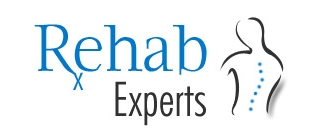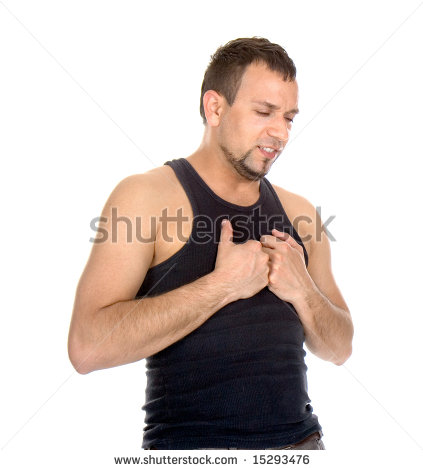How do we breathe?
Breathing is probably the most simple and yet complex thing we do. It is a conscious thing if we choose it to be, but the instant we stop thinking about it, it continues on its own. One of the biggest questions we have is when it continues on its own, how do things work? When we do a breathing drill, did we reset it in any way?
Think about the current popularity of muscle activation, say… activating the glutes. Almost everyone with a little knowledge of isolation and hip extension can say they activated the glutes, but when you stand up to leave the session, are your glutes doing something better than they were when you entered?
Simply because we run the circuit and create activity in a temporary, isolated situation, does that activity carry over into the other things we do.
Shortness of Breath
Shortness of breath is a common symptom for people with chronic obstructive pulmonarydisease (COPD), but working with a therapist to essentially retrain the way you breathe can offer relief. Two breathing techniques in particular, pursed-lip breathing and diaphragmatic breathing, are especially beneficial to people with COPD.
COPD patients start off learning breathing techniques with a therapist, either an occupational therapist or a physical therapist.
Your therapist will work with you to “retrain” you in the way you breathe.
Pursed-Lip Breathing for COPD
Pursed-lip breathing is basically breathing in through the nose and out through pursed lips. This technique is particularly useful when your shortness of breath flares up and when you exercise.
When you have COPD, weaknesses in your airways can cause them to collapse when you exhale, leaving air trapped in your lungs. This trapped air is what leads to shortness of breath. When you exhale with your lips pursed, there is increased resistance in your airways, which helps them stay open during exhalation.
Practice this technique by inhaling through your nose, making sure to keep your mouth closed. Then purse your lips and exhale softly for at least twice the amount of time as your inhale. Doing this forces you to use the correct breathing muscles and ensures you exhale as much air as possible so that it does not get trapped in your lungs. With less air trapped in your lungs, more oxygen will be able to get into your bloodstream.
Diaphragmatic Breathing for COPD
Diaphragmatic breathing is a breathing exercise that helps to strengthen your diaphragm, which is the most important muscle used in breathing. Your diaphragm is located under your lungs and helps you expel air from your lungs when you exhale. When air gets trapped in the airways in COPD patients, the diaphragm has difficulty functioning properly and eventually becomes less useful.
The first step in learning diaphragmatic breathing is to become more aware of the muscles you are using when you breathe so that you can use your diaphragm more. “Sometimes we will start [with] COPD patients lying down on their back so they’ll feel their diaphragm moving.
You can practice diaphragmatic breathing by lying on your back and placing one hand on the upper portion of your chest and the other on your belly. While you inhale through your nose, expand and push out your stomach muscles so that your chest does not move out. When you exhale, do so through pursed lips and contract your stomach muscles. After you have been practicing this technique regularly, you will automatically begin to use your diaphragm more. The goal is to use diaphragmatic breathing continuously. If you practice diaphragmatic breathing regularly, your diaphragm will begin to function better and your breathing will improve.
COPD Breathing: Techniques for Your Everyday Life
Rehab Experts therapists always have their patients practice breathing techniques while doing activities. That way, they will become accustomed to using these techniques around the house and in their everyday life.
Practice makes perfect: The more you do these breathing techniques, the more natural they will begin to feel and the easier your breathing will become.
The Role of PT For Breathing Rehabilitation
The goal of physical therapist treatment of patient with breathing problem is to help people manage their illness and prevent the need for hospitalization.
Physical therapist treatment is part of a pulmonary rehabilitation program that helps individuals achieve their optimal level of activity and function. Physical therapists use breathing training methods such as diaphragmatic breathing, pursed-lip breathing, and breathing combined with trunk movement along with physical activity to help patients “get through” periods when they feel short of breath. Exercise training for COPD often includes aerobic exercise, such as walking or using a stationary bike, and muscle-strengthening exercises for arms and legs.
Physical therapist management is particularly beneficial for patients who are medically frail and cannot initially be part of an outpatient program. Beginning with symptom-limited exercise, physical therapists will gradually increase patients’ strength and endurance.
Physical therapists are health care professionals who diagnose and manage individuals of all ages, from newborns to elders, who have medical problems or other health-related conditions that limit their abilities to move and perform functional activities in their daily lives. Physical therapists examine each individual and develop a plan of care using treatment techniques to promote the ability to move, reduce pain, restore function, and prevent disability. Physical therapists also work with individuals to prevent the loss of mobility by developing fitness- and wellness-oriented programs for healthier and more active lifestyles.

